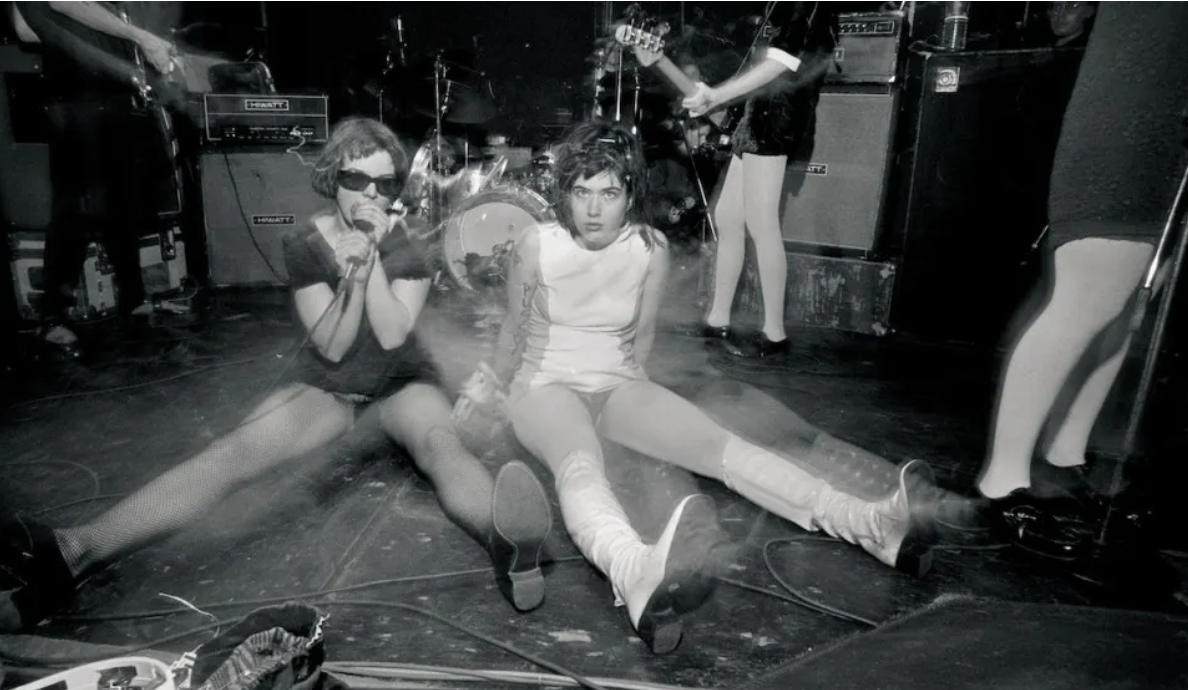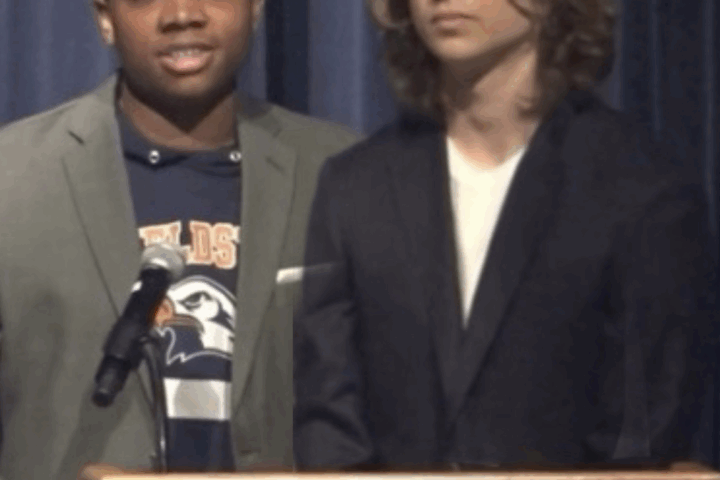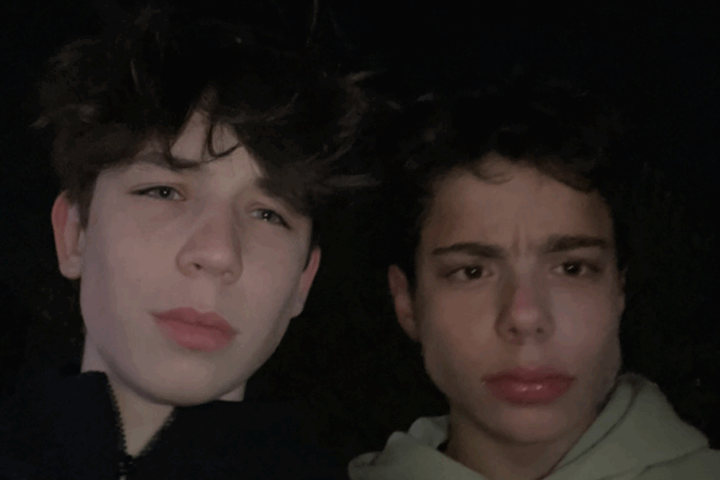Kathleen Hanna was stone cold drunk when she famously scrawled the phrase “Smells like Teen Spirit” in Sharpie on her friend Kurt Cobain’s apartment wall. She had the popular strawberry-scented deodorant in mind. But Hanna’s legacy is far more than merely inadvertently inspiring one of the most iconic songs in the history of rock ‘n’ roll. As the lead singer of Bikini Kill and later Le Tigre, Hanna can be remembered as the pioneer of femininist punk Riot Grrrl movement.
The Riot Grrrl movement emerged in the early 1990s. A group of women in Olympia, Washington held a meeting to address the blatant sexism that was prevalent in the punk scene. While punk rock was a genre known for advocating for radical social change and expressing feelings of social alienation, many members of the movement never saw the irony of ostracizing women with the same beliefs as their male counterparts. Women would be harassed and assaulted at concerts and would not be taken seriously as artists. The punk rock idea that “anything is possible” seemed to only apply to male individuals. Male punk bands like Sex Pistols, Ramones and The Clash dominated the punk scene while female punks faded into the background.
The women decided they wanted to start a “girl riot” against the punk scene and society. Thus, the Riot Grrrl movement was born.
The term “girl riot” was coined by Jen Smith in a letter to Alice Wolfe, a member of Bratmobile, which is another band credited with spearheading the Riot Grrrl revolution. Smith referred to the 1991 D.C. Mount Pleasant riots (which were in response to the murder of a Salvadoran man by the police) that were happening near her and emphasized the need for a similar riot — except this time for women. The “Grrrl” part of the title came from the fact that these women had not felt as empowered as they did when they were just oblivious little girls. Also, it was successful in displaying the anger behind the movement because it was reminiscent of a growl.
In many ways, Riot Grrrl paved the way for women to be taken more seriously in traditionally male-dominated genres of music like punk, grunge and alternative rock. It gave women an opportunity to spread awareness about the oppression they experienced because of their gender — topics mainstream media outlets did not dare to cover at the time. They worked to encourage women to not be intimidated to pick up a guitar and create music if they wanted to. It taught women that they did not need to assimilate to anyone else’s beauty standards. It challenged the idea that women have to be dainty and delicate and highlighted the fact that women have every right to be loud, angry and expressive.
Hanna, Tobi Vail, Billy Karren and Kathi Wilcox formed Bikini Kill in October 1990. The name was from a zine they created in response to the sexism they faced. Bikini Kill embodied everything that has ever been great about rock music. With their fast tempos, abrasive guitars and thrashing drums, they not only screamed about the frustrations they felt as women in society, but also celebrated their independence and self-confidence. Their eclectic fashion choices emphasized their lack of regard for social expectations. The girls fearlessly embraced their femininity — they performed adorning themselves in dresses and makeup, sometimes even singing in a valley girl accent. Bikini Kill’s most widely recognized anthem “Rebel Girl” can be remembered as an ode to female solidarity. Hanna sings: “When she talks, I hear the revolution/In her hips, there’s revolution/When she walks, the revolution’s coming/In her kiss, I taste the revolution!”
Kathleen Hanna and Kathi Wilcox in 1992
Hanna’s badass persona, electrifying stage presence and blaring, high-pitched vocals called on girls around the world to storm the barricades of the patriarchy. Bands like Sleater-Kinney, Babes in Toyland, Lunachicks, The Slits, Heavens to Betsy and L7 also centered their lyrics around confronting the patriarchy by talking about abuse, rape, sexual liberation and criticizing society’s unfair expectations about how women should look and behave. “Girls to the front” quickly became a rallying cry at shows.
“We tried to make songs that were fun and catchy and said something,” explained drummer Molly Neuman of Bratmobile. “We may not have been able to play perfectly, but we did [play], and we got better. Our impetus was, ‘If that guy can do it, why can’t we?’”
However, the movement was not entirely met with positivity and encouragement. The Riot Grrls were consistently misrepresented and ridiculed by the media for their so-called “man-hating and violent” views. They regularly were sent death threats by mail and were verbally and physically abused on stage. Hanna herself said: “People were throwing chains at our heads — people hated us — and it was really, really hard to be in that band… It’s sometimes hard for me when people are like, ‘Oh, I wish I was in a girl band in the ‘90s,’ and I’m like, ‘No, no, you don’t.’” Hanna recounts a time when there was a bomb threat on the club where Bikini Kill was performing. She said she hid in the dressing room in fear, forced to listen to the sounds of men yelling and complaining, as she debated whether they should cancel the show or not. And then suddenly, the girls in the crowd began chanting lyrics to “Rebel Girl.” It was female solidarity that finally gave the band the courage to start singing with the crowd. She later admitted: “I don’t know if we would have come down the stairs without those girls.”
The movement was revolutionary for its time, but it was certainly not without its flaws. Most Riot Grrrls were notorious for excluding women of color in their campaigns and glossing over their contributions to rock music. A typical Riot Grrl was young, middle class and above all, white. They showed little concern to how race made experiences of women of color different from theirs. The most prominent example that comes to mind is Courtney Love, frontwoman for Hole, a grunge band that would often be associated with the Riot Grrrl movement. However, the illusion of her unapologetically feminist persona was shattered after a video resurfaced of her at a Hole concert demanding the audience to scream the n-word. Love was not the only example of this lack of intersectionality, in fact, the issue remains prevalent in the feminist movement to this day.
In the late 90s, rock musician Tamar-kali Brown (also known as simply Tamar-kali) expressed her concern over the lack of diversity and intersectionality in the movement. “I got what Riot Grrrl was about,” she explained, “I didn’t think it was exclusive, but it didn’t feel inclusive to me.” Eventually, with fellow musicians Honeychild Coleman, Maya Glick and Simi Stone, she founded Sista Grrrl Riots. It was a safe space for black female punks to create and listen to music they were passionate about. It was a black woman’s alternative to both the male-dominated punk scene and the white-dominated Riot Grrrl.
Twenty years after the inception of Riot Grrrl, it is clear that the battle for gender equality is far from over. Women are still subjected to sexist stereotypes, frequently endure sexual assault and domestic violence and the gender pay gap still persists. Female musicians are yet to be treated on equal footing with their male counterparts. Artists Lady Gaga, Nicki Minaj and Taylor Swift have all come forward and shared their experiences as women in the music industry. In her acceptance speech at Billboard’s 2019 Women in Music Awards, Taylor Swift claimed that “as a female in this industry, some people will always have slight reservations about you. Whether you deserve to be there, whether your male producer or co-writer is the reason for your success, or whether it was a savvy record label. It wasn’t.”
The original Riot Grrrl movement may have only lasted a few years, but its influence and legacy lives on. It introduced to the world a new way of thinking by combining art and politics. In this way, Riot Grrrl is still present today. Its influence can be heard in later artists like Fiona Apple, Alanis Morisett, The Regrettes and more. Elsa Lyons (V), co-leader of the Music Appreciation Club, said that: “We are still in dire need to believe and follow the iconic Riot Grrrl philosophy.”
Thanks to Kathleen Hanna and the Riot Grrrl movement, young feminists all over the nation have been urged and inspired to continue to be loud about injustice and to fight to have their voices heard.






